Rising and Falling Beef Prices and Economics
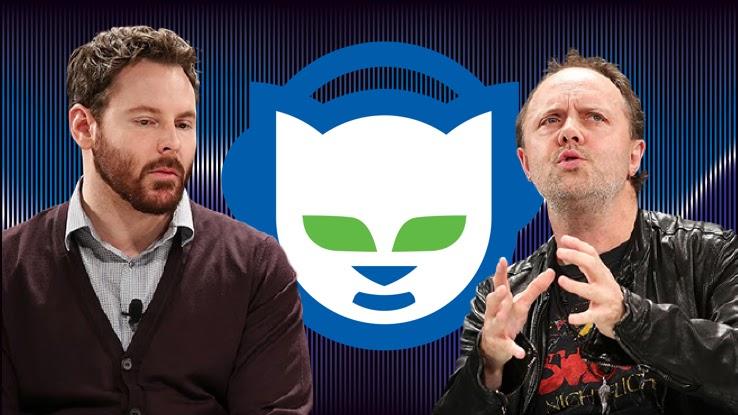
As you read this, there'due south a expert chance you're enjoying some amazing tunes through an online streaming service like Spotify, Pandora or Apple tree Music. Or peradventure you adopt keeping things a little chip old-school with your trusty iPod and — gear up for it? — headphones that actually have wires. No matter what your favorite style to tune in might be, it's safe to say the mode nosotros listen to music, non to mention the music industry itself, has evolved drastically in the last couple of decades. Many people credit this musical revolution to the peer-to-peer (P2P) file-sharing software program Napster.
But Napster's appeal to everyday listeners — namely the ability to expand their music libraries without having to pay to access that new music — was also responsible for its downfall. Afterwards facing plush lawsuits from irate executives and artists, Napster close downward its servers in July of 2001. Equally we arroyo the two-decade mark since Napster'south demise, we're taking a look dorsum at the ascent and autumn of one of the near controversial web-based applications in internet history, from its origins to the way it changed the music manufacture forever.
The Ascent of Napster: What Led to the Digital Audio Formats of Today?
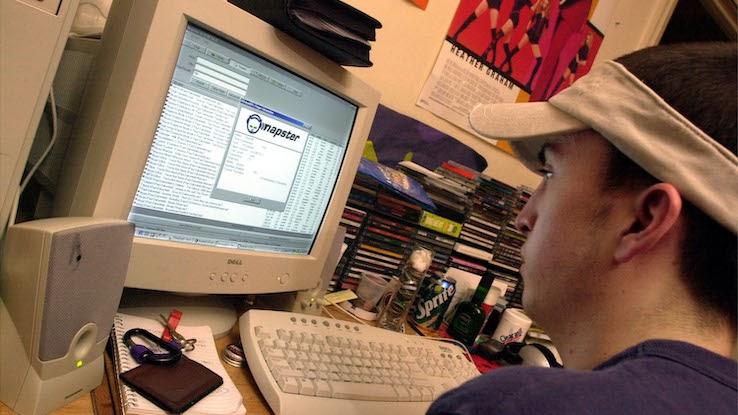
Before nosotros swoop into exactly what Napster was, information technology helps to take a look at the unlike ways music storage was made commercially available to us — and how these audio formats evolved. Starting in the 1800s, if people wanted to own music, they purchased large discs fabricated from hard rubber or shellac that were stamped with grooves to create vibrations that played songs. These were some of the earliest records people had access to. In the 1940s, manufacturers started making the discs from polyvinyl chloride, giving ascent to the term "vinyl" in reference to tape albums.
Past the mid-1960s, electronics companies had figured out how to store music on magnetic tape spooled in plastic housings. Known as 8-track tapes, they enjoyed widespread apply before slimming downward to smaller cassette tapes in the 1980s. And these analog methods of playing music became nearly-extinct when meaty discs (CDs) invaded tape stores everywhere. Later on dominating the market as the music-storage format of choice for several decades, even so, CDs, likewise, were eventually eclipsed. A new innovation was on the horizon — and we weren't going to need concrete storage methods similar records, cassette tapes or CDs to admission our favorite songs anymore.
When personal computers began to meet more widespread use in the belatedly 1980s and early 1990s, programmers developed methods of storing sound digitally to provide the audio on their software programs. Music industry executives also saw dollar signs in the decision to produce CD-ROMs that independent songs stored as digital Waveform Sound Files (WAV) on these discs. As with any technological advancement, users found means to copy WAV files from their CDs and store those files on their computers. This meant someone could purchase an anthology on CD, copy the music to their computer and store it on the same device.
And this also meant people could share that music with family unit and friends. Like copying a cassette tape, the premise of making copies of songs or creating playlists to requite to our high school love interests wasn't exactly something new. Merely in the belatedly 1990s, music sharing was set to go global when programmers Shawn Fanning and Sean Parker created an application to share digital song files among millions of users.
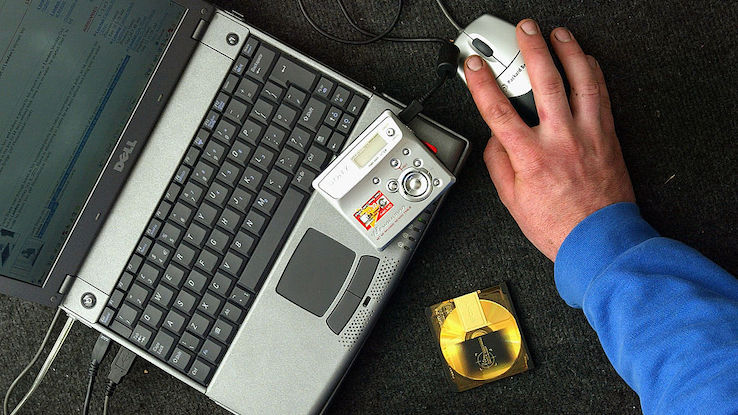
Napster essentially pioneered P2P file-sharing clients. But what exactly does that mean? Users "ripped" WAV files from CDs, pregnant they copied the digital sound files from CDs to programs on their computers and condensed that digital data into smaller files — what nosotros at present know as MP3s — that were more suitable for fast downloading. They then uploaded these MP3 files to Napster'due south service, saving the files with the music creative person's proper noun and the song title. Past downloading Napster, users substantially joined a network that gave them access to the file libraries of everyone else who was also using Napster.
A user could operate Napster's search office to expect for a track name or artist, and the file names popped up in search results. Later on a quick double-click and a few minutes, the file downloaded to the user's calculator, where they could so transfer it to a portable media player like an iPod. The more people who downloaded the MP3, the faster the file downloaded — and the farther it spread to new users without people having to purchase the bodily albums the songs were officially available on.
In one case someone had downloaded music files for gratuitous, they were able to do what they wanted with those files — technically speaking, just maybe not ethically and so. And record labels and artists weren't able to contain this widespread, illicit distribution of music, then they weren't able to profit from information technology the fashion they expected to. Thus began the back-and-forth battle between record labels, artists and consumers on the ethics and legality of P2P file sharing.
Napster Fell Just as Apace every bit It Rose
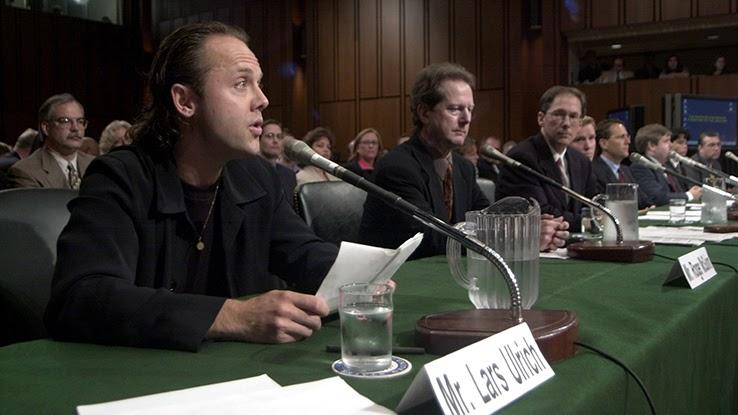
At its superlative, Napster had about 80 million registered users — a surprising number considering that the service was but operational from June 1999 to July 2001. And this massive popularity besides quickly raised the ire of music manufacture professionals who were concerned about the loss of profits and uncontrolled distribution of their intellectual belongings.
In 2000, Metallica sued Napster and a few colleges, including USC, Yale and Indiana Academy, for encouraging students to copy songs. Drummer Lars Ulrich wasn't shy with his criticisms of the service, saying, "It is sickening to know that our art is existence traded like a commodity rather than the art that it is." Fifty-fifty later on facing fierce backfire from fans who thought the conclusion was purely fiscal, Ulrich's stance didn't waver. In a 2014 Reddit AMA, he wrote, "The whole thing was near one thing and one thing simply — control… If I wanna give my s*** away for free, I'll give it away for free. That choice was taken away from me." Ulrich also appeared before Congress, accusing Napster of copyright infringement and testifying well-nigh its potential damages.
Dr. Dre, hip-hop pioneer and founder of Decease Row Records, lost coin as both an artist and a producer due to file-sharing on Napster. He filed a lawsuit in 2000 confronting Napster while leaving open the possibility of suing individual users. In a statement, Dr. Dre's attorney Howard King was blunt: "If it turns out that there are people who take huge hard drives and really are downloading copyrighted materials and transmitting [them] on the net, we may very well go afterwards them because they are engaged in theft."
Napster somewhen reached settlements with various artists, record labels and the Recording Manufacture Association of America and was ordered past a federal estimate to block music from whatever creative person who didn't desire it to be shared on the service. Equally a event of the litigation, Napster shut down its servers on July eleven, 2001, and tried to transform into a paid service that never caught on.
Not All Artists Protested the Service
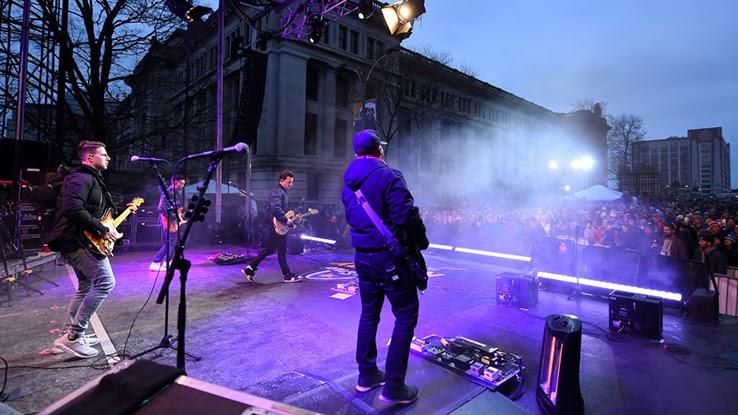
Perhaps surprisingly, some music artists take cited Napster as a catalyst for their popularity, not a detractor, because it allowed many more people to discover their music. The folk/rock band Of A Revolution (O.A.R) became a nationwide success on college campuses with the vocal "Crazy Game of Poker." The reason? "Napster led to what we can practice today," drummer Chris Culos told the Annoy Herald. "Once people found out nigh the ring [via Napster], they went back and supported usa by buying records, coming to shows, or passing information technology on to their friends. In our case, Napster was huge."
Several artists were thrilled at the innovative method Napster presented for reaching much broader audiences. Chris Cornell of bands Soundgarden and Audioslave said, "I think this attribute of technology is really going to bring a lot of dissimilar angles of life and commerciality out of the corporate world and requite it back to the individuals." According to AV Guild, Napster was also responsible for turning Radiohead into "global superstars." The English band had never had a tiptop-20 hit in the U.S., but later on their 2000 album Child A made its fashion to Napster 3 months before its release appointment, millions of people began downloading it — and Kid Adebuted at the number-one spot on the Billboard 200 sales chart.
The value of Napster as a potential promotional tool became part of its appeal in an increasingly divided industry. Fifty-fifty artists like David Bowie, Billy Corgan and Limp Bizkit happily adjusted to the new method for sharing music across the globe. Napster represented an heady new way for artists to accomplish fans, even if other established artists — and federal courts — didn't share the sentiment.
The Terminate of an Era: Napster's Rebirth and Adaptation Fizzle Out With Fans
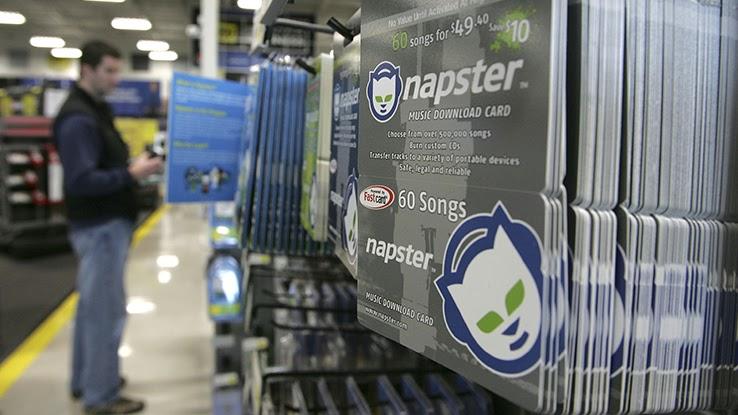
Software visitor Roxio, which creates programs for burning CDs and DVDs, purchased Napster'south brand and logos in a bankruptcy auction soon after the shutdown in an endeavor to re-brand another music service it bought, Pressplay, as Napster 2.0 — a paid version. Napster then inverse hands again following electronics giant Best Buy's buy of the service earlier transferring once more to Rhapsody, one of the commencement streaming services to offer the monthly-subscription format that leaders like Spotify and Apple Music at present follow.
In August 2020, Napster was again sold — this time to MelodyVR, a virtual reality concert platform. Throughout all these transformations and corporate transactions, users jumped ship, not knowing how the platform would alter once more with each new auction or rebrand. Today, about 3 million people use Napster — a far fall from the 80 million users the service saw at its new-millennium top.
Although the music industry won the battle confronting Napster, the war to stop free digital music sharing continues. BitTorrent, a similar P2P sharing platform, is now the nearly common method for sharing music, movies, books, computer software and other digital files. More than than 170 million users are active on this platform, despite cyberspace service providers' frequent attempted crackdowns on users who pause copyright infringement laws.
Today, many artists produce their music on home studio computers, host cocky-booked tours and promote themselves on social media, funding success without the backing of large record labels. Napster's democratization of music potentially sparked the move that freed artists to become independent of record labels in ways they couldn't have anticipated thirty years agone.
Other aspects of Napster may have been far ahead of their fourth dimension, too. Retrieve those pesky digital files that led to Napster's downfall? Many of today's artists include gratuitous downloads of their albums with a vinyl tape purchase, eliminating the need to download songs illegally to obtain digital copies. As The Neat Pumpkins' Billy Corgan stated early on, "This revolution has already taken place" — but the music manufacture is undergoing continual revolutions fifty-fifty today. And Napster deserves credit for taking the risks that ultimately spurred this digital revolution.
Source: https://www.ask.com/culture/napster-20-years-later?utm_content=params%3Ao%3D740004%26ad%3DdirN%26qo%3DserpIndex
0 Response to "Rising and Falling Beef Prices and Economics"
Post a Comment